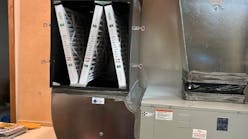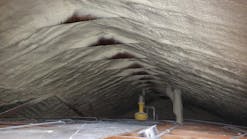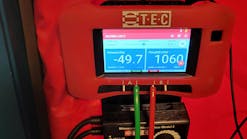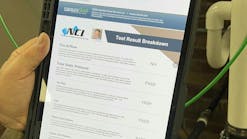Emerson Climate Technologies, St. Louis, MO, says results from the company’s third contractor and distributor survey designed to measure readiness for the 2010 transition away from R-22 equipment shows more HVACR contractors are ready, trained and quoting R-410A products.
Survey results show 57 percent of the participants said their technicians and staff are ready to support R-410A, and 14 percent reported that they are exclusively quoting R-410A. This is a three percent increase from the survey sent six months prior.
Although the survey shows that the industry continues to prepare for the transition, some contractors and distributors seem to be pushing their conversions closer to the 2010 deadline. Almost one-fourth of those residential contractors and distributors who initially planned to convert by 2008 (according to the November 2007 survey) have now pushed their transition out to 2009.
Commercial contractors and distributors have pushed their conversions out even further to 2010. When asked why they recommend R-22 equipment over R-410A, the predominant answer was the current cost associated with R-22 system repair versus replacement with an R-410A system. However, technical issues like line flush requirements, technician inexperience, lack of training with R-410A and retrofitting existing equipment are starting to become a larger concern.
"This latest survey tells us that the industry continues to embrace R-410A, but that we need to further address contractor and distributor concerns, including technical issues and technician training, while also continuing to communicate the importance of earlier conversion,” said Brent Schroeder, president, Emerson Climate Technologies Air Conditioning Division. Emerson Climate Technologies provides information about HFC refrigerants – including R-410A – on its website and has also published several white papers to educate and address questions surrounding the application of these refrigerants.
The survey shows more than half of those who said that they bought or stocked ahead for the 13 SEER transition will do the same this time around, primarily for use in normal system replacements. However, 58 percent of those surveyed also said that they expect to see more repairs of R-22 systems as opposed to R-410A system replacement, primarily due to economic reasons.
“This learning causes us particular concern," Schroeder says. "A significant increase in demand for R-22 during the last half of 2009 could have an unsettling effect on the entire industry. We all remember the shortages, inventory fluctuations and supply chain issues that made the 13 SEER transition a very tumultuous time for everyone in the industry. At Emerson Climate Technologies, we are working with all of our partners to more effectively manage through the R-22 phase-out and ensure that the customer gets the best long-term solution that meets his needs.”
Although there are some similarities between the 13 SEER transition and the upcoming phase-out of R-22, there are also vast differences. Stocking up on 10 SEER equipment was either necessary or beneficial from a business perspective in some cases. Stockpiling R-22 equipment may be much less ideal because of the expected increase in refrigerant price as the supply of this diminishes over the next several years. In fact, the latest survey results show that contractors and distributors are definitely noticing that R-22 refrigerant is getting more expensive, collectively reporting an increase of 59 percent over the past one to two years. Whereas, according to those surveyed, R-410A refrigerant has only increased an average of 4 percent over the past year.
“Due to rapidly increasing R-22 refrigerant prices and issues with slowing inventory, the sooner our industry converts to R-410A, the better off contractors and distributors will be in the long run,” said Karl Zellmer, vice president of sales, Emerson Climate Technologies, Air Conditioning Division. “Although we are a bit concerned by the latest results showing the timeline push closer to a 2010 conversion, we are confident that if we come together as an industry and direct our focus we can ensure a smooth and successful transition for the industry as a whole,” Zellmer says. Despite the showing of a potential delay trend, many contractors are already working aggressively toward this transition goal, the results of which are apparent through customer readiness. According to this latest survey, an average of 16 percent of the contractor and distributors’ customers are requesting R-410A equipment. This trend seems to be linked to a positive and expanded evolution of benefits and selling points. Although contractors are still using the economics of R-22 as a selling point when talking to their customers, they are now also speaking to the environmental benefits of R-410A, new technology and the improved comfort level.
Emerson Climate Technologies is surveying HVAC contractors and distributors to gauge their preparedness for the phase-out of HCFC refrigerants in new U.S. equipment by 2010. The 2010 phase-out marks a major undertaking for the HVAC industry. The number of products that will need to be changed over from HCFC to HFC refrigerants represents a significant challenge. Emerson Climate Technologies manufactures broad product offerings of both R-22 and R-410A compressors and related HVAC components.
For more information on R-410A readiness, including Emerson Climate Technologies technical white papers, contractor checklists and more, visit EmersonClimate.com/refrigerant/ac.








